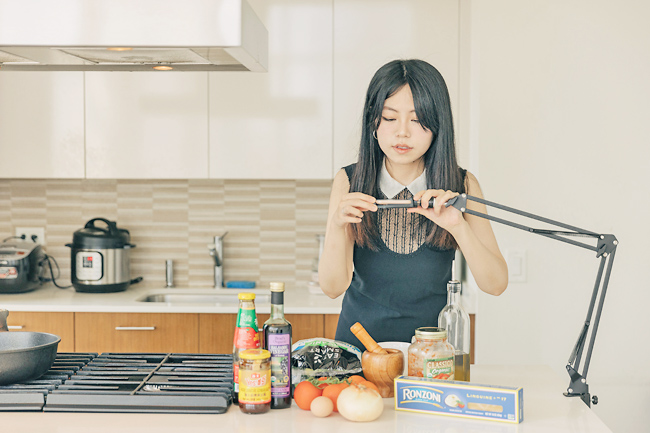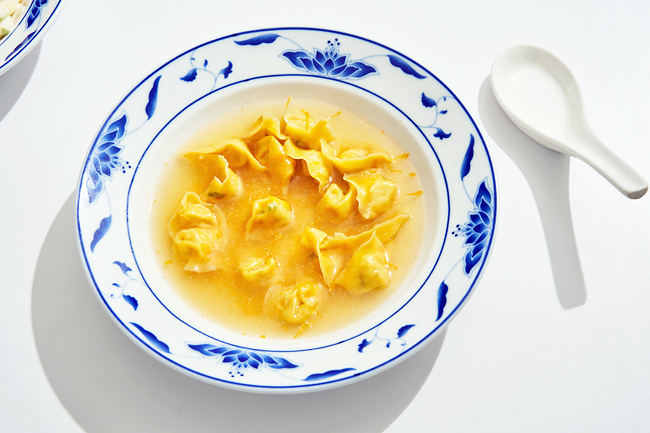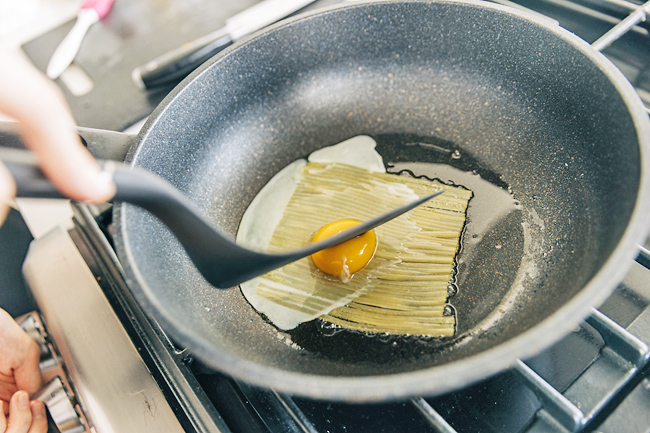Jess Eng
THE WASHINGTON POST – Pearl (Yiping) Ma draws you into her TikTok with the words, “Hey foreigners, let’s traumatise Italians.” Off the bat, she’s every Italian grandmother’s worst nightmare: She threatens to break the linguine but instead cuts the cooked pasta with a knife, then breaks an egg on top before brushing Chinese soybean paste and oyster sauce onto the thin strips.
But then she starts to explain. “Pasta is a lot easier to get in America than Asian noodles.
That is just the truth,” Ma said. “This recipe is approved by hundreds of international students who miss our hometown food, kao leng mian.” By the end of the video, you’re on her side and eager to taste her version of this northern Chinese grilled noodle.
Since early April, Ma has been documenting her culinary swaps on TikTok with a humourous bent. She’s “offended” Japanese and Mexican people but especially likes to pick on Italians, who are notorious for decrying any twist to their food. She has cooked Chinese meat buns (bao zi) with wrappers made from Pillsbury pizza dough and transformed Italian meatballs into pearl meatballs, a Chinese spring festival dish.
Ma initially thought more people would be offended by her videos, but to her surprise, most support her “putting things together but cooking it in a way that makes sense.” As one commenter puts it, “As an Italian I am not mad.”
For Ma, the similarities between the two cuisines became evident when she moved to the United States (US) four years ago. Whenever she felt homesick for food from northern China, she gravitated to a slice of cheesy pizza or a bowl of pasta. They didn’t taste like her favourite dishes from home, but the starchy, saucy flavors in Italian foods satiated her taste buds. She made similar substitutions in the kitchen, adding tomato sauce to Chinese noodles and oyster sauce to Italian pasta. This Italian-Chinese combination has since become her TikTok calling.



“The concept of my series is using foods to build a bridge between different cultures and different foods,” Ma said. “One of my followers said I’m offending people to unite them.”
Ma belongs to a group of immigrants and Asian Americans who have connected the dots between Italian and Asian cuisines. Chinese international students, like Ma, discover and exchange recipes on the social media platform Xiaohongshu, or Little Red Book. In the restaurant world, Asian American chefs craft menus based on their experiences traveling to Italy, attending culinary school and internalising the therapeutic rituals of pasta and pizza making. Even an older generation of Asian home cooks – from Vietnam to China to the Philippines – chime in with stories of scouring a store’s pasta section to engineer dishes from their homeland. In every corner of the food world, you’ll find both unexpected and intentional stories from Asian Americans cooking with Italian ingredients and techniques.
Beginning with Chinese cuisine, Asian and Italian foods have a long, storied history of intermingling. A common myth that both pasta and pizza were invented in China and brought back to Italy by Marco Polo stirred waves in the Italian and Chinese communities.
In actuality, this tale was fabricated by the National Macaroni Manufacturers Association in 1929 to promote US-made pasta.
A professor of Chinese studies at the University of Michigan Miranda Brown, said that even mythical stories like this obscure a more complex history that includes Middle Eastern and African traders. “It’s a sexy story, right? We all know who Marco Polo is, but there’s a much longer history of exchange that tends to get forgotten because we don’t really study the Maritime Silk Road.” But the idea of two cuisines taking and giving has resonated with people because pasta and noodles, though different in preparation and texture, look nearly identical. They may not share a common origin, but evidence suggests that these starchy foods developed concurrently for hundreds of years, with China coming first. In 2005, archaeologists unearthed a bowl containing 4,000-year-old noodles at the Lajia site in northwestern China. In the 4th Century BC, an Etruscan tomb showed people making a dish that resembles pasta, though some scholars dispute this evidence. Regardless of its origins, the popular, simple, versatile combination – flour, water and a pinch of salt – speaks to a universal craving for doughy foods.
In recent years, the Chinese community has grown and prospered in Italian cities such as Rome and Milan, with businesses dishing out “Chinese ravioli” and “Beijing crepes” – or dumplings and jian biang – to locals and tourists.
Back in the 1960s, Chinese cookbook author and restaurant owner Joyce Chen referred to wontons as Peking ravioli to introduce Chinese cuisine to Italian customers in Boston. And because Italian and Chinese immigrants in America have historically congregated in ethnic enclaves and sought to rent from the same landlords, a city’s Little Italy and Chinatown often neighbor each other.
Brown carefully considers the origins of Chinese and Chinese American food in her classes.
To her, the mixing of Italian and Asian ingredients, especially Chinese foods, seemed natural. “Chinese food at this point is American food. Everyone knows what Chinese food is,” she said. “And then Italian food is also very popular. Pizza. Spaghetti. These are staples of American life.”
Chefs around the country are letting their passion for Italian cuisine influence culinary projects closer to home. Those who attended culinary school spent hours honing techniques from France and Italy, whereas Asian cuisine, despite all its distinct regional cuisines, were lumped together on a short day. Even 10 years ago, few fine dining restaurants specialised in cuisines such as Chinese and Korean, so a majority of Asian American chefs sought training elsewhere. But now these Asian American chefs command their own kitchens and have created opportunities for the next generation of chefs.
Asian American chefs with tales of Italy and its cuisine are not hard to find. Brandon Jew, who owns the Michelin-starred Cantonese restaurant Mister Jiu’s in San Francisco, travelled to Bologna, Italy, to begin his culinary career. His James Beard Award winning cookbook Mister Jiu’s in Chinatown showcases a wonton recipe with wrappers made from a pasta machine and seasonal ingredients from California farms – an ingredient-driven approach picked up from his stays in Bologna and Shanghai.
Across the country, DC-based Filipino chef Paolo Dungca was first exposed to pasta and Italian food while working at Disneyland’s Country Trattoria and later honed his pasta-making skills at Restaurant Eve in Alexandria, Virginia. He said he immediately noticed similarities between Filipino and Italian cuisines in celebratory dishes such as Filipino spaghetti, which he calls a “sweet Bolognese with sausages.” When deciding to open Piccoletto, a casual Washington, DC, restaurant specialising in pasta with Asian sauces, he knew to incorporate his favourite pastime into the menu: kneading pasta dough.
Brooklyn-raised Calvin Eng opened Cantonese American restaurant Bonnie’s in 2021. He never had a chance to train in a traditional Chinese kitchen, similar to the ones that he visited as a kid in New York City’s Chinatown.
Instead, most of his training comes from culinary school, stints at dim sum house Nom Wah and modern Taiwan restaurant Win Son, and sessions with his mother in the kitchen.
Now at the helm of his own restaurant, he finds himself comparing his food to Italian cuisine to explain the difference between Cantonese cooking and other regional Chinese cuisines.


















































